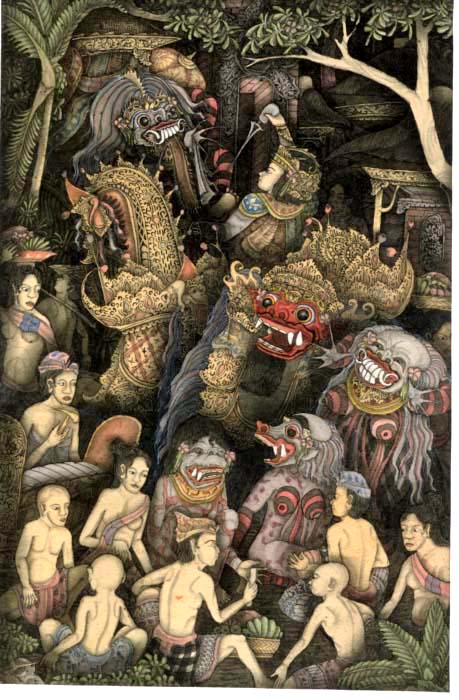Barong & Rangda - This is basically a story about the struggle between good & evil. Good is personified by the Barong Keket, a strange, fun-loving creature in the shape of a shaggy semi-lion. Evil is represented by Rangda, a witch. Ultimately the two characters engage in battle at which point the Barong's keris-bering followers rush to attack Rangda. The witch, however, uses her magical powers to turn the keris knives in, upon the owners, who fall into a trance and start trying to stab themselves. The barong then uses magic to protect his followers from the knives. In the end, the barong triumps and Rangda retreats to recuperate her strength for the next encounter. 'Evil' is not completely destroyed. Rather it shows the eternal duality between good & evil. All that remains is for a priest to help the keris dancers out of their trance with the help of a little holy water.


